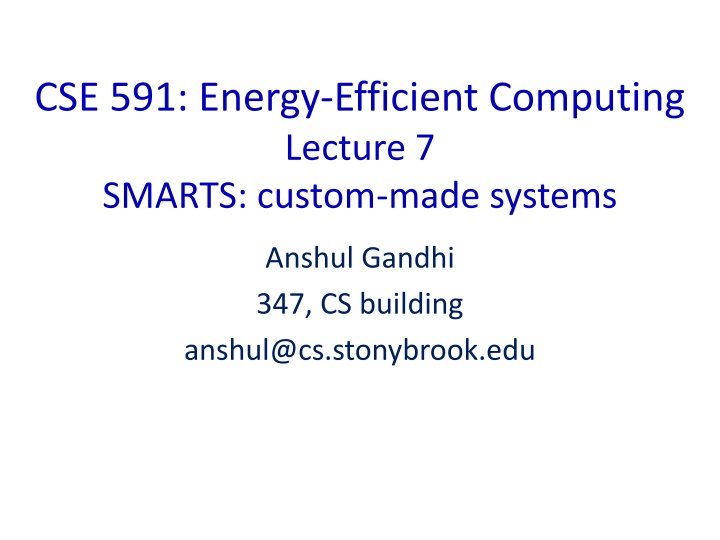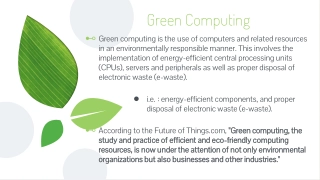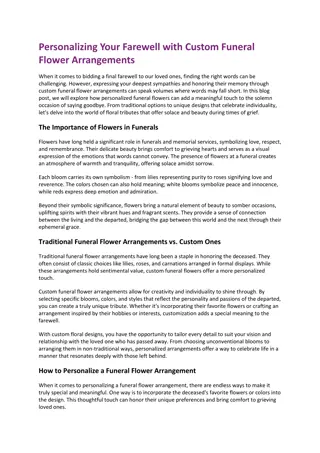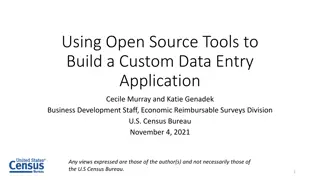
Energy-Efficient Computing with SMARTS: Custom-Made Systems Overview
Delve into the realm of energy-efficient computing through SMARTS, designed for custom-made systems by Anshul Gandhi. Explore benchmark competitions, data-intensive workloads, FAWN processors, Moore's Law, Dennard Scaling, and processor scaling trends.
Download Presentation

Please find below an Image/Link to download the presentation.
The content on the website is provided AS IS for your information and personal use only. It may not be sold, licensed, or shared on other websites without obtaining consent from the author. If you encounter any issues during the download, it is possible that the publisher has removed the file from their server.
You are allowed to download the files provided on this website for personal or commercial use, subject to the condition that they are used lawfully. All files are the property of their respective owners.
The content on the website is provided AS IS for your information and personal use only. It may not be sold, licensed, or shared on other websites without obtaining consent from the author.
E N D
Presentation Transcript
CSE 591: Energy-Efficient Computing Lecture 7 SMARTS: custom-made systems Anshul Gandhi 347, CS building anshul@cs.stonybrook.edu
Data-intensive workloads Scan-bound large sequential Seek-bound small random examples? problems? examples? problems?
FAWN CPUs are much faster than data delivery Makes sense to balance CPU and data delivery Use weaker CPUs Use faster data delivery (Flash vs. HDD)
Why FAWN? 1. Memory wall (??) 2. Increased CPU power consumption 3. DVFS is limited Modern CPUs operate close to Vmin Constant leakage current 4. Peak power and data center density
FAWN results #Nodes dictated by required GB space and QPS performance
processor scaling trends
Moores Law 1. Moore s law (observation) # transistors/chip 2X/2yr (how?) Frequency as transistor size (max 9GHz) Leakage current/power as transistor size Heat as frequency
Dennard Scaling 2. Dennard scaling (observation) Transistor power (V+I) as transistor size + Moore s law = perf/watt 2X/2yr (how?) Koomey s law Dennard scaling broke down recently due to leakage current (though Moore s continued) Dark Silicon So we did multicore!
Dark silicon Cannot power on all of the CPU Result of: 1. Success of Moore s law 2. Failure of Dennard scaling Turbo boost
Main ideas Heterogeneous cores 1. For different performance requirements 2. Energy considerations (battery vs. plugged) 3. Thermal considerations 4. Dark silicon






















